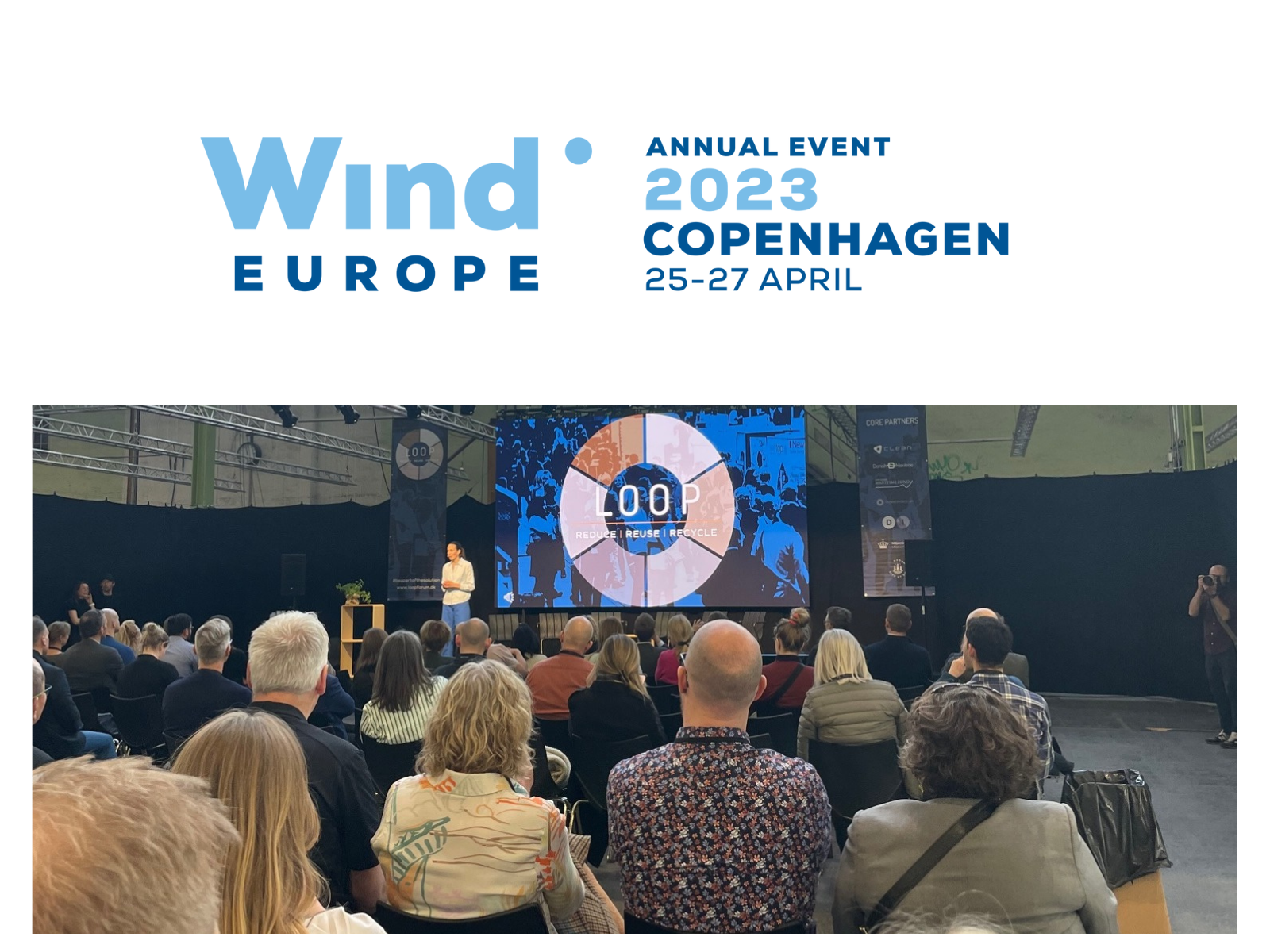Alive and Kicking
Copenhagen this week has been positively buzzing with the great and good from Denmark and the world, participating at two highly topical events taking place at the same time.

One event was the annual Wind Europe, which gathers what seems like all of the players within the wind industry in Europe for three days of conference and exhibition. The second event was the annual Danish LOOP conference and exhibition, where innovative companies within circular economy in Denmark meet to seek inspiration partnerships and business contacts.
We participated at both events and came away highly encouraged and energised. Here are a few impressions that we took with us from those three rather full days:
- Not only Denmark, but the world, is alive with companies seeking to contribute to the green transition. There are hosts of start-up companies with great ideas, but also - and importantly - many of the world's major companies are now investing wholeheartedly and decisively in that space. While the pressure is on from regulators, see further down, it might indeed soon come to pass that the private sector will overtake the public sector in both ambition and results achieved within the sustainability space. While the world economy at large may be looking at a downturn, the sustainability space is only increasing activity, investments and innovation.
- If only a modest percentage of the sustainability projects being proposed come to fruition, we are in for a large shift in how things in our societies are or can be done. This does not only go for the energy sector, but virtually all sectors of the economy.
- There is considerable anxiety with regard to access to the materials required to realise the green transition. The agendas are both in respect of security of supply and security politics, which are of course inseparable, but other agendas in respect of materials have to do with societal, social and health aspects, as well as the environmental and climatic repercussions.
- For many companies, circularity in respect of materials is still a nascent realization. It is dawning on many that they will not for long be allowed to have the raw cost of materials be the only determining factor. Regulators are moving strongly to enforce a wider set of criteria for material selection, both by way of market-based initiatives and by way of tightening demands on the social, environmental and climate aspects of materials.
- Indeed, regulators, both on national and supra-national levels, are in the process of enacting what was frequently called a "tsunami" of regulation in respect of the environment, the climate, digitalisation, consumer protection and other areas that will have a large bearing on how business is conducted and what aspects companies will have to consider to maintain their "licence to operate". Regulatory demands on participants in the economy are growing increasingly complex, not least because of the needs imposed by the climate crisis.
- In the circular economy, data is hard to come by, but nonetheless, there will be a huge demand for circularity data in years to come. Whoever will be in a position to use large sets of quality data in respect of circularity will be in a privileged position to succeed in a future where products will need to come with Digital Product Passports, and where organisations will need to comply with the new Corporate Sustainability Reporting Directive.
- We were particularly happy to see strong participation from the Danish maritime industry at the LOOP circularity event. The maritime industry is really turning a corner these years, and it was a joy to see strong and innovative companies show up with the support of Danish Maritime and The Danish Maritime Fund for a special session on circularity in the maritime sector. We are happy to be a part of a growing realisation that the maritime industry will have a huge contribution towards the green transition.
- For all of the above reasons, our project to come up with a digital platform to optimise and track & trace the circularity journey of materials is being very well received in all corners. We have been somewhat overwhelmed, but also rather happy, with the reception we have had.
- We made many new contacts that we are certain will prove mutually beneficial going forward, and our conviction that the value chain required to be put together for our ideas to succeed is realistic has only been strengthened as a result. There will be some amazing circularity stories to be told in future.
In short, the green transition is very much alive and kicking, and our ideas were well received; they look not only very realistic, but also very timely. We could not be happier.